NASCAR as a sport had its first race on 15th February 1948. Since then over the decades, NASCAR introduced safety measures and regulations such as hydraulic brakes in 1948 to advanced technologies like the HANS device and SAFER barriers. Tragic incidents, including Dale Earnhardt's 2001 crash, led to innovations such as closed-face helmets, improved harness systems, and crash data analysis.
NASCAR's commitment extends to track design, pit road protocols, and car engineering, resulting in fewer fatalities and injuries. Today, NASCAR stands as one of the safest motorsports despite its inherent risks. Here’s a list of the top 5 races that forced NASCAR to change its rules.
#5. The 2022 Xfinity 500 at Martinsville: Ban on the “Hail Melon” Move
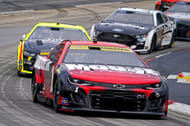
During the 2022 Martinsville race, Ross Chastain performed the daring “Hail Melon” move on the final lap. He intentionally drove his car into the outside wall at full throttle through turns 3 and 4, using the wall to guide his vehicle and gain five positions. This bold maneuver helped him qualify for the Championship but raised significant safety concerns about car stability and track damage.
As a result, beginning in the 2023 season, NASCAR introduced a rule penalizing similar moves with time or lap penalties. Reflecting on the move, Chastain said:
“I am proud of it. I don’t want to do it ever again, though… It was the longest wreck of my life. It was just really successful. I have no desire to ever do that again. Selfishly, I am glad I get to be the only one in history to successfully do it.” (Fox Sports)
#4. 2010 Aaron’s 499 at Talladega: Ban on Two-Car Tandem Drafting
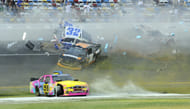
Tandem drafting, a technique where two cars remain bumper-to-bumper to increase speed, became a popular strategy on high-speed tracks like Talladega and Daytona. However, the dangers of this method became evident during the 2013 Nationwide Series race at Daytona, when Kyle Larson’s car went airborne, sending debris into the stands and injuring over 30 spectators.
By 2014, NASCAR banned tandem drafting in the Nationwide and Truck Series. Teams faced penalties for using the technique during races or practice sessions. Officials encouraged pack racing instead, which gave drivers greater individual control over their cars. Driver James Buescher supported the change, stating:
“In pack racing, you kind of get to control more of your own destiny. You still have to rely on a lot of other cars to work with you in the draft, and two cars are still faster than one. But the fact you don’t have to have somebody locked onto your back—or front bumper—puts a lot more control in your own hands.” (Autosport)
#3. 1987 Winston 500 at Talladega: Introduction of Roof Flaps
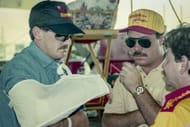
The 1987 Winston 500 showed the dangers of high-speed racing when Bobby Allison’s car went airborne at over 200 mph, tearing down 100 feet of fencing. This terrifying incident underscored the risks of superspeedways like Talladega.
In response, NASCAR introduced smaller carburetors and restrictor plates in 1988 to reduce speeds. Roof flaps, which prevent cars from lifting off the ground during spins or crashes, were introduced in 1994.
This race also marked a milestone for Davey Allison, who won his first premier series win during his rookie season. After the race, he remarked:
“These guys did a super job on this car, and I could do anything I wanted with it. I’m just tickled to death.” (NASCAR Hall of Fame)
#2. 1990 Atlanta Journal 500: Introduction of Pit Road Speed Limits
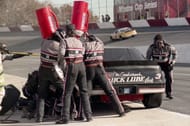
A tragic accident during the 1990 Atlanta Journal 500 claimed the life of Mike Rich, a tire changer, after a collision between Ricky Rudd and Bill Elliott’s cars. This led NASCAR to introduce pit road speed limits in 1991 to enhance safety for both pit crews and drivers.
The new rules set two-speed limits: 90 mph for pit entry sections and 45 mph on pit road during races. During caution periods, the 45 mph limit was enforced across the entire pit area.
Reflecting on the rule, Chase Elliott commented:
“It’ll certainly be different having two gears. Having a taller gear for your fast section and then having to downshift to get to your normal pit-road speed is definitely something I don’t think I’ve ever done before. It’s going to take a little getting used to from a driver’s standpoint to do that efficiently.” (NASCAR)
#1. 1959 Daytona 500 (The first big race on this NASCAR circuit): Photo Finish Technology
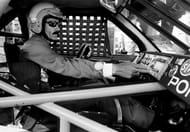
The first Daytona 500 ended in controversy when Johnny Beauchamp was initially declared the winner over Lee Petty. Three days later, NASCAR overturned the decision after reviewing photographic evidence, officially awarding the win to Petty.
Photographer T. Taylor Warren captured the image showing Petty crossing the finish line first. This incident led NASCAR to adopt photo-finish technology to ensure race results were accurate moving forward.
The race also marked a turning point in NASCAR history as the first major event held at the newly built Daytona International Speedway. Reflecting on the event, Richard Petty said:
“It looked like it went on and on and on, know what I mean? And the banking—well, we hadn’t seen anything like that. Right then is when we knew that racing was about to change in a big way. But the thing was, we were all rookies. Nobody knew any more about the place than anybody else.” (Autoweek)